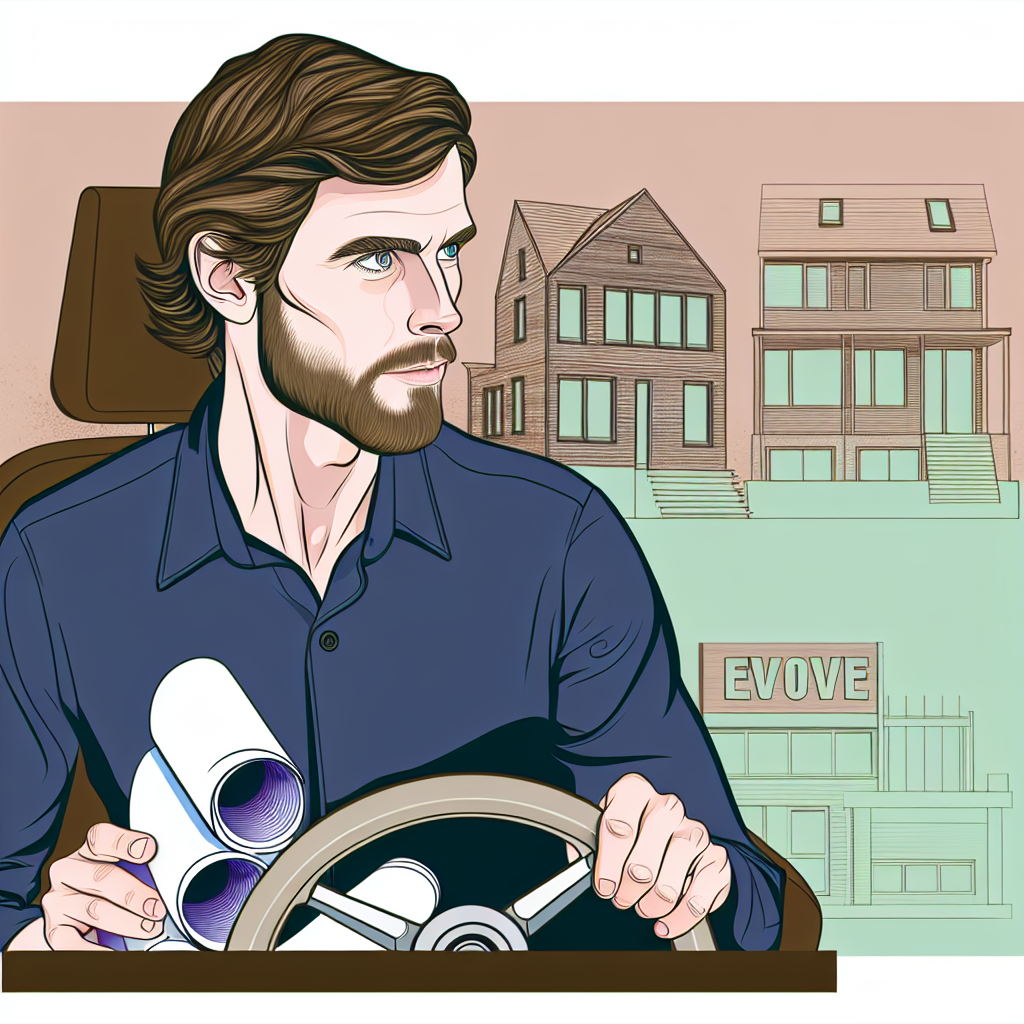Introduction to Consumer Preferences in Housing Design
Consumer preferences are evolving in significant ways today.
These changes are reshaping the housing design landscape.
Understanding these preferences is essential for industry professionals.
The Influence of Lifestyle Changes
Modern lifestyles heavily influence housing choices.
More people now prioritize functionality over traditional aesthetics.
This shift leads to open floor plans and multipurpose spaces.
Additionally, remote work requires dedicated home office areas.
Environmental Concerns and Sustainability
Growing environmental awareness drives consumer preferences.
Many buyers actively seek sustainable housing options.
Green materials and energy-efficient systems are highly favored.
Homebuyers prefer features like solar panels and smart tech.
Technology Integration in Homes
Technology continues to transform housing design.
Smart homes are increasingly appealing to buyers.
Home automation features enhance convenience and security.
Furthermore, energy management systems attract environmentally conscious buyers.
Community and Lifestyle Preferences
Consumers increasingly value community-focused living environments.
Walkable neighborhoods and shared amenities are in high demand.
Buyers often seek homes that foster a sense of belonging.
Access to parks, schools, and shops enhances property appeal.
Diverse Demographics and Unique Needs
The diverse composition of buyers informs current housing trends.
First-time homebuyers often seek affordability and flexibility.
Meanwhile, older adults prioritize accessibility and comfort.
Designing for specific demographics can meet these varied needs.
Historical Overview of Housing Design Trends and Consumer Influence
Early Influences on Housing Design
Housing design has evolved greatly throughout history.
Consumers have consistently driven these changes.
For instance, in the early 20th century, functional designs gained popularity.
Homebuyers prioritized practicality and cost-effectiveness during this era.
Consequently, builders focused on affordable materials and efficient layouts.
The Rise of Suburban Living
The post-World War II era marked a significant shift in housing trends.
Americans began flocking to the suburbs.
This movement changed consumer preferences for spacious living environments.
As a result, builders started creating larger homes with open layouts.
Additionally, single-family homes became the norm during this period.
Modern Influences and Design Innovation
In recent decades, housing design has witnessed remarkable innovations.
Consumers now emphasize sustainability and energy efficiency in their choices.
Modern technology has enabled smarter home designs.
These changes reflect a growing awareness of environmental issues.
Consequently, builders are increasingly incorporating green materials.
The Role of Technology in Housing Preferences
Smart home technology has transformed buyer expectations.
Homeowners seek integrated systems for security and convenience.
This shift encourages builders to include tech-friendly designs.
Moreover, remote work trends have influenced home office spaces.
As a result, multi-functional rooms are becoming more common.
Consumer Feedback and Market Adaptation
Feedback from homebuyers plays a crucial role in design evolution.
Builders actively seek input to match consumer desires.
Social media platforms enable instant communication regarding preferences.
Consequently, trends can change rapidly based on consumer demand.
This responsiveness has reshaped marketing strategies in housing.
The Role of Sustainability in Modern Housing Design
Increasing Consumer Awareness
Consumers are becoming more aware of environmental issues.
This awareness is shifting preferences toward sustainable products.
Consequently, housing designs now prioritize eco-friendly materials.
These changes reflect a growing demand for sustainability.
Incorporating Green Materials
Modern housing increasingly uses renewable resources.
Examples include bamboo flooring and recycled metal siding.
Builders opt for low-VOC paints to improve indoor air quality.
Such choices minimize environmental impact significantly.
Energy Efficiency and Smart Technology
Energy efficiency is a top priority in new designs.
Smart home technology enhances energy use monitoring.
This technology improves heating and cooling efficiencies.
Solar panels are becoming a common feature in homes.
Designing for Water Conservation
Water-saving features are increasingly popular in housing design.
Low-flow fixtures and rainwater harvesting systems are in demand.
Landscaping with drought-resistant plants reduces water usage.
These practices support sustainable living in urban areas.
Creating Community Spaces
Sustainable housing encourages the development of community spaces.
Shared gardens and recreational areas foster community bonding.
Moreover, these spaces enhance the quality of life for residents.
As a result, neighborhoods become more connected and resilient.
Future Trends in Sustainable Housing
The future of housing design will lean heavily on sustainability.
Innovations in green technology will continue to rise.
Expect further emphasis on energy-positive homes.
Additionally, adaptive reuse of buildings will gain popularity.
The market will reflect ongoing changes in consumer preferences.
Delve into the Subject: The Growing Appeal of Suburban Living: What It Means for Real Estate
Impact of Technology on Consumer Preferences and Design Innovations
The Role of Smart Technology
Smart technology has transformed modern living spaces.
Consumers now seek homes equipped with smart devices.
These include smart thermostats, lights, and security systems.
Such innovations enhance convenience and energy efficiency.
Homeowners can control systems remotely using mobile apps.
Consequently, this trend influences overall design choices.
Shift Towards Sustainable Materials
Technological advances promote the use of sustainable materials.
Consumers increasingly favor eco-friendly building options.
This shift reflects concerns about environmental impact.
Designers now explore innovative materials like bamboo and recycled composites.
These choices not only benefit the planet but also attract buyers.
As a result, sustainability becomes a priority in new housing projects.
Personalization and Customization Trends
Technology enables greater personalization in housing design.
Consumers now desire spaces that reflect their lifestyle and preferences.
Virtual reality tools allow potential buyers to visualize their ideas.
Furthermore, customizable layouts and features are increasingly popular.
Home builders are responding by offering flexible design options.
This trend enhances the appeal of new developments.
The Impact of Remote Work
The rise of remote work has reshaped housing design priorities.
Home offices have become essential for many buyers.
Designers are creating functional workspaces within homes.
These spaces require ample natural light and ergonomic layouts.
Additionally, soundproofing has gained importance in residential design.
Ultimately, these changes meet the needs of a changing workforce.
Integration of Health and Wellness Features
Health considerations are influencing housing decisions.
More buyers appreciate features that promote well-being.
Fresh air circulation systems and natural lighting are now priorities.
Communities are focusing on outdoor spaces for physical activity.
Designers are integrating green spaces into residential plans.
This shift showcases a holistic approach to living environments.
See Related Content: How Climate Change is Redefining Real Estate Hotspots in the U.S.
Shift Towards Open Floor Plans and Flexible Spaces
Embracing Open Concepts
Homebuyers increasingly prefer open floor plans in their living spaces.
This design fosters social interaction and family bonding.
Moreover, open layouts provide a sense of spaciousness and light.
Consequently, architects and builders are adapting to this trend.
They prioritize large, multifunctional areas over traditional segmented rooms.
Adapting to Changing Lifestyles
Flexibility is key in modern housing design.
People want spaces that adapt to their evolving needs.
This includes multi-use rooms that serve various purposes.
For example, a guest room can double as a home office.
Additionally, movable walls create dynamic environments.
Impact of Technology on Design
Smart home technology elevates the appeal of open and flexible spaces.
Homeowners appreciate the convenience of tech-integrated features.
For instance, voice-activated systems enhance functionality.
As a result, homes are becoming more user-friendly.
Home design must accommodate these technological advancements.
Environmental Considerations
Sustainability shapes the direction of housing design.
Eco-friendly materials and energy-efficient systems are now standard.
Consumers prefer designs that minimize environmental impact.
Open layouts often facilitate better airflow and natural lighting.
Thus, they contribute to energy savings.
Future Trends in Home Design
The shift towards open and flexible designs continues to grow.
Homebuyers will prioritize adaptability and sustainability.
Moreover, the desire for community-oriented spaces will influence choices.
In essence, consumer preferences drive innovative housing solutions.
Builders must remain responsive to these evolving demands.
Explore Further: How Inflation and Rising Costs Are Shaping Today’s Housing Market
Influence of Remote Work on Home Office Design
The Rise of Remote Work
Remote work has transformed traditional home environments.
Many professionals now seek dedicated office spaces in their homes.
This trend affects how homes are designed and renovated.
Homeowners increasingly prioritize functionality and comfort.
Creating Dedicated Office Spaces
Designing a dedicated workspace enhances productivity.
Many people prefer quiet areas separated from family activities.
Some homeowners choose to repurpose guest rooms or basements.
Others invest in soundproofing to minimize distractions.
Essential Features for Home Offices
Ergonomic furniture is a top priority for many remote workers.
Desks should provide enough space for essential equipment.
Comfortable chairs support long hours of work effectively.
Additionally, ample lighting is crucial for focus and morale.
Emphasizing Aesthetic Appeal
Many consumers want their home offices to reflect personal style.
Color schemes play a significant role in creating an inviting atmosphere.
Artwork and decor should inspire creativity and productivity.
Plants and greenery can enhance overall well-being in the workspace.
The Impact on Housing Trends
Builders are now designing homes with flexible spaces in mind.
A growing number of new homes feature built-in offices.
Energy-efficient technologies are also becoming standard in new designs.
Potential buyers increasingly demand homes ready for remote work.
Uncover the Details: How Remote Work is Changing the Real Estate Market in Silicon Valley

Emerging Trends in Eco-Friendly and Smart Home Features
Growing Demand for Eco-Friendly Homes
Homebuyers today prioritize sustainability in their housing choices.
Many seek eco-friendly homes that reduce environmental impact.
Features like solar panels and energy-efficient appliances draw interest.
Additionally, green building materials are becoming a norm.
Natural resources such as bamboo and recycled materials are popular now.
Smart Home Technology Adoption
Consumers increasingly embrace smart technology in their homes.
Smart home systems enhance convenience and security features.
Home automation allows users to control lights, security, and more remotely.
As a result, many homes are equipped with smart thermostats and locks.
These advancements lead to energy savings and increased peace of mind.
Integration of Health and Wellness Features
Health-conscious consumers demand features promoting well-being.
Homes equipped with air filtration systems improve indoor air quality.
Natural lighting is another essential consideration for many buyers.
Moreover, spaces dedicated to physical activity gain popularity.
Designs including home gyms or yoga studios attract health-oriented individuals.
Community and Lifestyle Considerations
Modern buyers also value community-centric designs in housing.
Walkable neighborhoods and communal spaces foster social interactions.
Environmental sustainability often extends to shared community resources.
Thus, new developments focus on creating eco-friendly shared facilities.
Such trends reflect a lifestyle shift towards sustainability and connectivity.
Cultural Influences on Housing Design Preferences
Global Trends
Housing design reflects global trends in consumer preferences.
As cultures merge, they influence architectural styles significantly.
For instance, minimalism has gained popularity worldwide.
This trend prioritizes simplicity and functionality in design.
People appreciate clean lines and uncluttered spaces.
Regional Variations
Differing regions embody unique cultural identities in housing design.
For example, Mediterranean homes showcase vibrant colors and tiled roofs.
In contrast, Scandinavian design emphasizes light and natural materials.
This geographical variation enriches the housing landscape globally.
Social Media Impact
Social media platforms drive housing design trends among younger consumers.
Platforms like Instagram and Pinterest showcase innovative designs frequently.
Users often replicate popular styles in their homes.
This sharing culture accelerates the spread of design ideas.
Environmental Considerations
Modern consumers prioritize sustainability in their housing choices.
Eco-friendly materials and energy-efficient designs attract attention.
As a result, builders increasingly incorporate green technologies.
Consumers enjoy feeling responsible for their environmental impact.
Open Spaces and Flexibility
Contemporary designs emphasize open spaces reflecting lifestyle changes.
People prefer flexible layouts that adapt to their needs.
This transition reflects shifts toward remote work and family dynamics.
Such designs foster connectivity within homes.
Personalization and Customization
More homeowners seek personalized spaces that reflect their identities.
Customization allows consumers to express unique tastes and lifestyles.
Designers now offer more options for tailored living environments.
This trend highlights the importance of individual expression in housing.
Future Directions in Housing Design Based on Consumer Insights
Evolving Consumer Preferences
Consumers increasingly prioritize sustainable living spaces.
They desire energy-efficient homes that minimize environmental impact.
Moreover, many homeowners look for adaptability in their living spaces.
This flexibility allows for changes in lifestyle or family dynamics.
Technological Integration
Smart technology is becoming a central feature in modern home design.
Consumers appreciate automation for convenience and energy management.
Additionally, innovative home security systems are in high demand.
These features enhance safety and peace of mind.
Community-Centric Design
Homebuyers show a growing interest in community-oriented developments.
These neighborhoods foster social interaction and connection.
Access to parks, schools, and local businesses enhances appeal.
Furthermore, walkability remains a key factor for many consumers.
Health and Wellness Features
Design aspects that promote health are gaining importance.
Natural light and ventilation improve indoor air quality.
Moreover, spaces for physical activity contribute to well-being.
Consumers also favor environments that facilitate mental relaxation.
Future Outlook
As consumer preferences evolve, so will housing designs.
The focus will shift more towards sustainability and technology.
Designers must listen to consumer feedback to stay relevant.
Ultimately, housing solutions will aim to enhance quality of life.
Additional Resources
Pew Research Center | Numbers, Facts and Trends Shaping Your …




